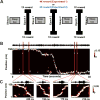Reverse Replay of Hippocampal Place Cells Is Uniquely Modulated by Changing Reward
- PMID: 27568518
- PMCID: PMC6013068
- DOI: 10.1016/j.neuron.2016.07.047
Reverse Replay of Hippocampal Place Cells Is Uniquely Modulated by Changing Reward
Abstract
Hippocampal replays are episodes of sequential place cell activity during sharp-wave ripple oscillations (SWRs). Conflicting hypotheses implicate awake replay in learning from reward and in memory retrieval for decision making. Further, awake replays can be forward, in the same order as experienced, or reverse, in the opposite order. However, while the presence or absence of reward has been reported to modulate SWR rate, the effect of reward changes on replay, and on replay direction in particular, has not been examined. Here we report divergence in the response of forward and reverse replays to changing reward. While both classes of replays were observed at reward locations, only reverse replays increased their rate at increased reward or decreased their rate at decreased reward, while forward replays were unchanged. These data demonstrate a unique relationship between reverse replay and reward processing and point to a functional distinction between different directions of replay. VIDEO ABSTRACT.
Copyright © 2016 Elsevier Inc. All rights reserved.
Figures







References
-
- Buzsaki G. Hippocampal sharp waves: their origin and significance. Brain Res. 1986;398:242–252. - PubMed
-
- Crespi LP. Quantitative variation of incentive and performance in the white rat. Am J Psychol. 1942;55:467–517.
MeSH terms
Grants and funding
LinkOut - more resources
Full Text Sources
Other Literature Sources

